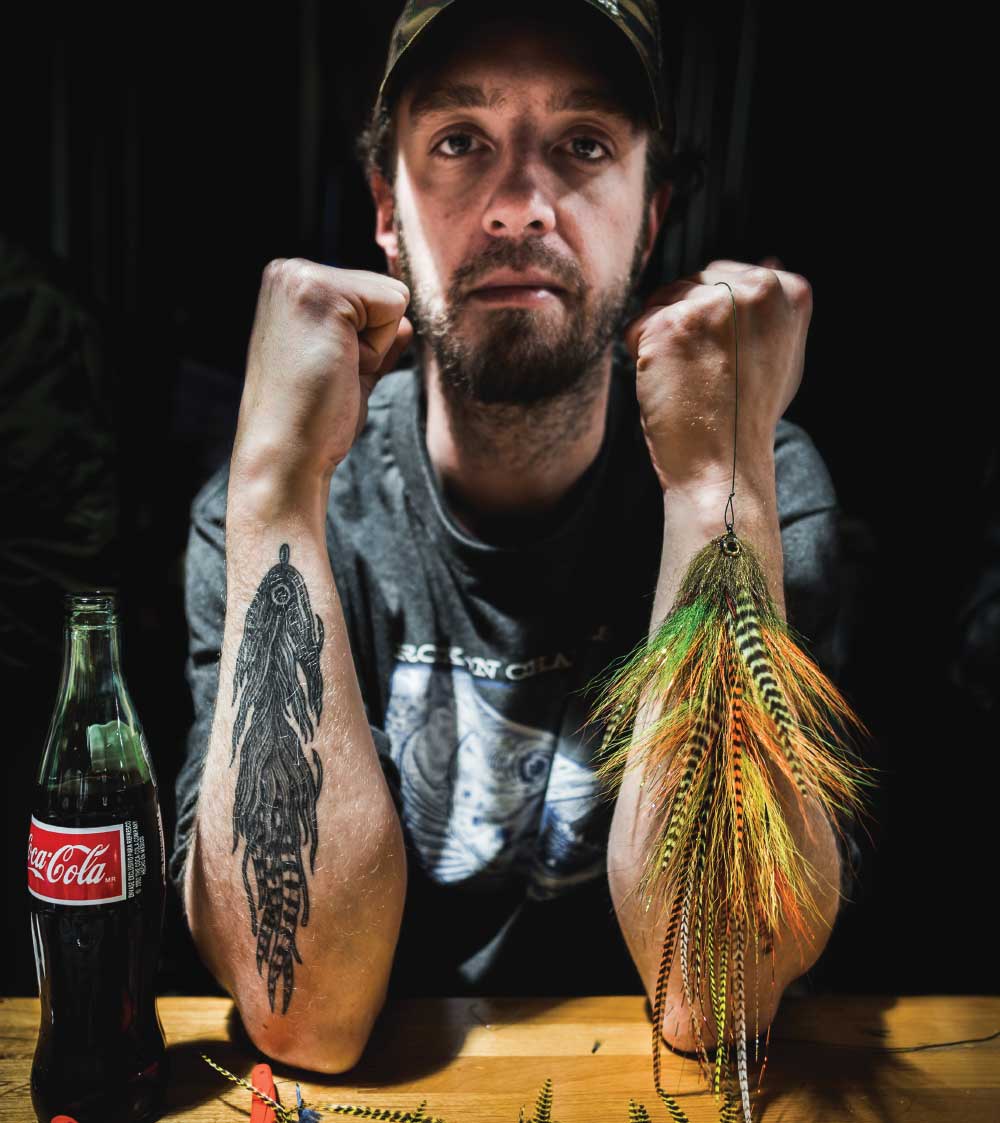
How musky flies saved Brian Bergeson’s life
I’m sitting in Bob Mitchell’s Fly Shop in St. Paul, Minnesota, watching Brian Bergeson tie a fly. His thread wraps are quick and confident. He trims a tightly bound clump of bucktail and a plume of hair rises and settles to the table. His Red Bull sits safely outside the fallout radius. His fingers seem to operate on micro muscle-memory rather than direct control. Over the course of a half hour, as we talk about muskies and the flies he ties for them, a pair of bare hooks develops into a twelve-inch black-and-orange streamer.
We step outside for a break and Bergeson lights a cigarette: A simple act, slightly more difficult than it looks, unconsciously practiced until deeply and personally known. More ritual than habit. Reminds me of his tying style.
He smokes quietly. He’s tall and thin, almost gaunt, but his voice is deep and resonant.
“Fly tying saved my life,” he says, as he lights a second cigarette with the butt of the first. “No question in my mind.”
“The power of the vise,” he calls it, this realignment from chemical abuse to tying flies, trading a vice for a vise.
It started with his grandfather, who himself had once used flyfishing and tying to help him quit drinking. He’d been inspired by young Brian, who at seven was following him around the unforgiving steelhead rivers of western Lake Superior: the Knife and the Devil’s Track and Wisconsin’s Bois Brule. Twenty years later, when Bergeson needed to get sober, his grandfather was there with the vise and boxes of old Herter’s materials in wax paper. Brian sat down and tied thirty dozen woolly worms. It worked for a while.
“I’m an addict,” he says with a small shrug, sitting back down at his vise. “Legal, illegal, what have you. It’s in my genes.” He tells me that he continued to tie and fish and get clean, and then relapse. “By the end I was drinking whiskey like water. My life was falling apart.”
It wasn’t until 2013 that things changed.
“The day I got sober was the day I started tying musky flies,” he says. “I would tie every minute I was awake so I wouldn’t drink.” He found himself on the ground floor of the exploding musky flyfishing phenomenon. Soon he was partnering with guides and companies in the industry and selling flies. “That’s when it all clicked: This is a thing I can do.”
It’s the blank canvas, he says, that makes musky flies different from tradition-bound trout flies. Within the “hair, feather, flash” streamer playbook there’s a lot of room for creativity, detail, and innovation, and while it’s easy to tie a big, flashy streamer, it’s not easy to tie a really good one.
“Every thread wrap matters. Every hair,” Bergeson says. “I could spend an hour picking out…





